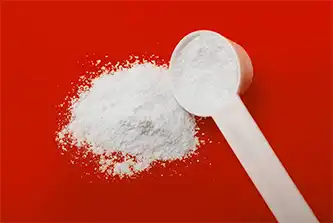Hebei Messi Biology Co., Ltd. stated that magnesium oxide and acrylonitrile-butadiene-styrene copolymer (ABS) were used as raw materials to prepare ABS thermal conductive plastics by blending and molding. The study found that the amount of magnesium oxide filling was greatly affected by the particle size. Large-particle magnesium oxide can be filled up to 600 parts, while small-particle magnesium oxide can only reach a maximum of 400 parts. At 300 parts, the thermal conductive ABS filled with small-particle magnesium oxide has a higher thermal conductivity.

The percolation theory was used to analyze the relationship between thermal conductivity and filling volume fraction, and it was found that the ABS thermal conductive plastic filled with large-particle magnesium oxide in the range of 300-600 parts was well in line with the percolation theory of face-centered cubic field point percolation with a critical volume fraction (φc) of 0.198. SEM observed the thermal conduction path connected by magnesium oxide particles in the ABS thermal conductive plastic filled with large-particle magnesium oxide; the ABS thermal conductive plastic filled with small-particle magnesium oxide was affected by the interface thermal resistance within the studied range and did not conform to the percolation theory.
By compounding large and small particle size magnesium oxide, better thermal conductivity can be obtained by filling the small particle size magnesium oxide into the gaps in the large particle size magnesium oxide thermal conductive network.
